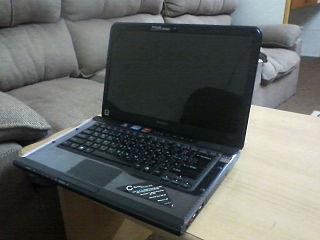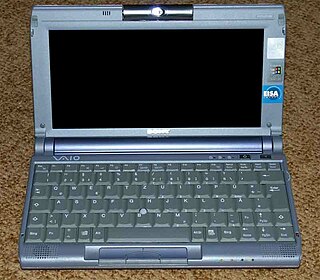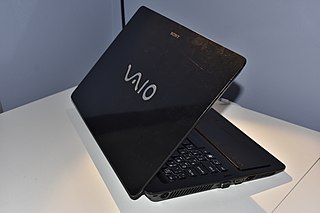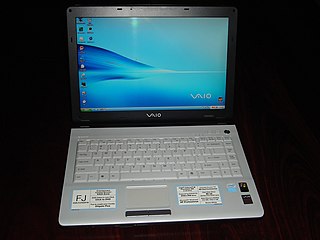 W
WThe Sony Vaio C Series is a discontinued series of notebook computers from Sony introduced in September 2006 as the consumer alternative follow-up to the then current SZ series.
 W
WThe Vaio C1 PictureBook series is a series of subnotebooks from Sony's Vaio brand, branded 'Picturebook' for its webcam and video capture capabilities. It was first released on September 19, 1998, in Japan only.
 W
WThe Vaio F series is Sony's current multimedia and gaming orientated laptop. Launched in January 2010, it replaced the Sony Vaio FW series. Like the preceding model, it features a 16.4" screen, but with Full HD 1920x1080 resolution, 240 Hz refresh rate, and LED backlight. The model came in two choices, 2D or 3D models. The 3D model is included with 3D glasses.
 W
WSony Vaio FE series started in 2006 with the FE11 and ends in 2007 with the FE41.
 W
WThe Sony Vaio FJ series is a 14.1 inch notebook designed for Windows XP and the FJ270, FJ290, FJ330,FJ370 models in particular, are designed for Windows Vista. The FJ Series uses only the Pentium M processors using the Sonoma platform of Intel Centrino.
 W
WThe Vaio S series was a line of notebook computers from Sony introduced in summer 2004. They have been touted as business laptops, and their designs have focused on being thin and light. They also have features friendly to businesspeople, such as TPM chips, matte (anti-glare) displays, RAID SSDs, and extended sheet batteries, as well as continuing to include RJ-45 and VGA (D-Sub) connections.
 W
W W
WThe Vaio X series is a line of high-end ultraportable notebook computers from Sony introduced in September 2009, claiming to be the world's lightest notebook, at 655 grams ( ). It features an 11.1", 16:9, 1366x768 LED-lit LCD screen with built-in webcam, 2GB of DDR2 RAM, a choice of 64, 128 or 256 GB SSD, Intel Atom Z540 1.86 GHz or Z550 2.00 GHz, WWAN.